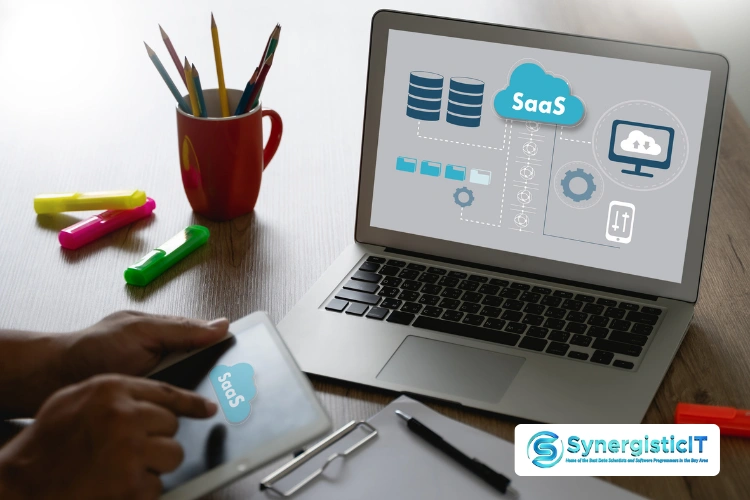SaaS Interview Questions and Answers- Part 4
LISTEN TO THE SaaS FAQs LIKE AN AUDIOBOOK

Working in SaaS sales or customer success requires a solid grasp of not only the product—but the model. Interviewers may test your understanding of customer acquisition cost (CAC), lifetime value (LTV), net revenue retention, upselling strategies, and how to handle churn.
This guide offers a curated list of SaaS interview questions and answers focused on business, marketing, and sales professionals. Learn how to speak about SaaS KPIs, go-to-market strategies, customer onboarding, and managing product demos.
These questions will help you clearly show your impact on pipeline growth, client relationships, and revenue goals. Whether you’re applying for roles like account executive, sales engineer, or growth marketer, mastering these topics will help you sound more confident and insightful in interviews.
Answer:
A solid understanding of Python provides several advantages for individuals in the field of cloud computing. Python is a widely-used high-level programming language that is well-suited for various cloud-related tasks, including automation, scripting, and data processing. Proficiency in Python empowers cloud professionals to efficiently design, manage, and automate cloud-based applications, as well as streamline and optimize various cloud operations.
Answer:
Certainly, employing Docker in a cloud computing setting involves adhering to a set of optimal practices. First, it’s crucial to use the latest stable version of Docker. Employ Docker Compose when dealing with multi-container applications. Keep your images in a private registry for enhanced security. Focus on optimizing container size to boost efficiency.
Leverage orchestration tools for streamlined management. Implement robust security measures to safeguard against potential threats. Regularly monitor container performance and stay vigilant about updating and patching Docker components. By adhering to these practices, you can make the most of Docker’s potential within a cloud environment.
Answer:
CI/CD (Continuous Integration/Continuous Deployment) pipelines offer a multitude of benefits when integrated into cloud computing environments. These pipelines streamline the entire software development and deployment process. By automating repetitive tasks, CI/CD pipelines reduce manual effort, allowing developers to focus on coding and enhancements.
Continuous integration ensures frequent code integration, automated building, and testing, which aids in early issue identification. This proactive approach enhances code quality and minimizes last-minute bugs. The seamless integration of CI/CD pipelines in cloud computing optimizes development and ensures efficient software delivery.
Answer:
Implementing automated build, test, and deployment procedures in a cloud environment involves utilizing tools such as Jenkins, CircleCI, TravisCI, or GitLab CI/CD. These tools can be seamlessly integrated with cloud platforms like AWS, GCP, or Azure, enabling automated distribution of code updates to production environments.
Answer:
Infrastructure as code (IaC) refers to the practice of managing and provisioning infrastructure through code rather than manual configuration. This approach aligns with CI/CD as it allows infrastructure changes to be automatically tested and deployed alongside code changes.
IaC streamlines the process of provisioning and configuring infrastructure components, such as servers and networks, using code. This synchronization between code and infrastructure accelerates upgrades and enhances the reliability of infrastructure deployments.
Answer:
To establish a new directory using the command line interface, utilize the “mkdir” command, followed by the desired directory name. For instance, if you wish to create a directory named “my_folder,” input the command “mkdir my_folder.”
Answer:
To display a list of all files within a directory using the command line, apply the “ls” command for Unix-based systems (e.g., Linux, macOS), or the “dir” command for Windows.
- For Unix-based systems, employ the command “ls /path/to/directory” to list files within a specific directory, or simply “ls” to list files within the current directory.
- In Windows, use “dir C:\path\to\directory” or “dir” for the current directory. These commands will reveal the contents of the designated directory, encompassing both files and subdirectories.
Answer:
To copy a file from one directory to another through the command line, utilize the “cp” command, specifying the file name to be copied, followed by the destination directory. The command’s syntax is as follows: “cp source_file destination_directory.”
Answer:
To view the contents of a file via the command line, apply the “cat” command followed by the file name. For example, input “cat filename” to display the file’s contents. The “cat” command is employed to concatenate and exhibit file contents within the command line interface.
Answer:
The command “gzip” is employed to compress a file using the command line. This action will compress the file and add a “.gz” extension to the compressed version. Decompression can be achieved using the “gunzip” command or “gzip -d” command, followed by the compressed file’s name.
Answer:
Three multi-tenancy models within the context of Virtual Private Server (VPS) environments are the Shared Model, the Isolated Model, and the Multi-Tenancy Model. Here’s an overview of how each operates:
- Shared Model: Under this model, one or more tenants share a single software application instance. This approach allows for resource sharing and cost savings. However, it introduces complexities related to security, resource allocation, and performance optimization.
- Isolated Model: In the Isolated Model, each tenant is allocated a separate instance of the software program. While this offers better resource management, it comes at a higher cost compared to the Shared Model.
- Multi-Tenancy Architecture: The Multi-Tenancy Architecture in Virtual Private Servers provides each tenant with their virtual machine. This hybrid approach balances resource efficiency and cost-effectiveness, surpassing the Isolated Model in terms of cost while delivering superior resource management.
Answer:
Middleware plays a pivotal role in cloud computing deployments by serving as an intermediary layer between hardware and software components. This abstraction layer simplifies the process of deploying and managing cloud applications and services. Additionally, middleware can enhance speed and scalability by efficiently managing connections between cloud applications and the underlying infrastructure.
Answer:
A range of strategies can be used to enhance cloud infrastructure security. These include integrating multi-factor authentication for enhanced access control, encrypting sensitive data to safeguard confidentiality, deploying firewalls, and utilizing network monitoring tools to detect and prevent unauthorized access. Regular security updates and patches are also critical to maintaining a secure cloud environment. Employing a combination of these strategies can significantly elevate the overall security posture of cloud infrastructure.
Answer:
Effectively managing network security in a cloud environment involves several techniques. Virtual Private Networks (VPNs), firewalls, and network access control lists (ACLs) can be utilized to control and secure network traffic. VPNs provide secure remote access, while firewalls and ACLs restrict unauthorized entry and manage traffic flow between network resources. Continuous monitoring and robust logging practices aid in the timely detection and mitigation of security threats, ensuring a proactive Answer to potential incidents.
Answer:
Serverless computing allows developers to focus on code without managing server infrastructure. While SaaS abstracts the management of entire applications, serverless computing abstracts the management of individual functions or services within an application, enhancing efficiency and reducing operational overhead.
Answer:
To implement routing within a Virtual Private Cloud (VPC), utilize route tables and network access control lists (ACLs). Route tables define the paths of network traffic within the VPC, ensuring efficient data flow. Network ACLs offer granular control over traffic by allowing or denying access based on source and destination IP addresses, ports, and protocols. Additionally, you can configure routing using dynamic routing protocols such as RIP, OSPF, or BGP, enabling automatic updates to routing tables in Answer to network topology changes.
Answer:
Securing a Virtual Private Cloud (VPC) against unauthorized access involves employing security groups to govern inbound and outbound traffic, and setting up extensive logging and monitoring mechanisms to detect and prevent unauthorized activities. Utilizing encryption technologies like IPSec and SSL ensures secure communication within the VPC, safeguarding data integrity and confidentiality.
Answer:
SaaS providers catering to regulated industries often offer industry-specific compliance certifications, enhanced security measures, data encryption, and dedicated infrastructure options to ensure compliance with stringent regulations.
Answer:
SaaS may involve data residing in different geographic regions. Organizations must consider data residency regulations and compliance requirements and ensure appropriate controls to maintain data governance and sovereignty.
Answer:
SaaS applications often adopt agile development methodologies, enabling faster feature releases and updates. DevOps practices are adapted to ensure seamless integration, testing, and deployment of SaaS applications.

